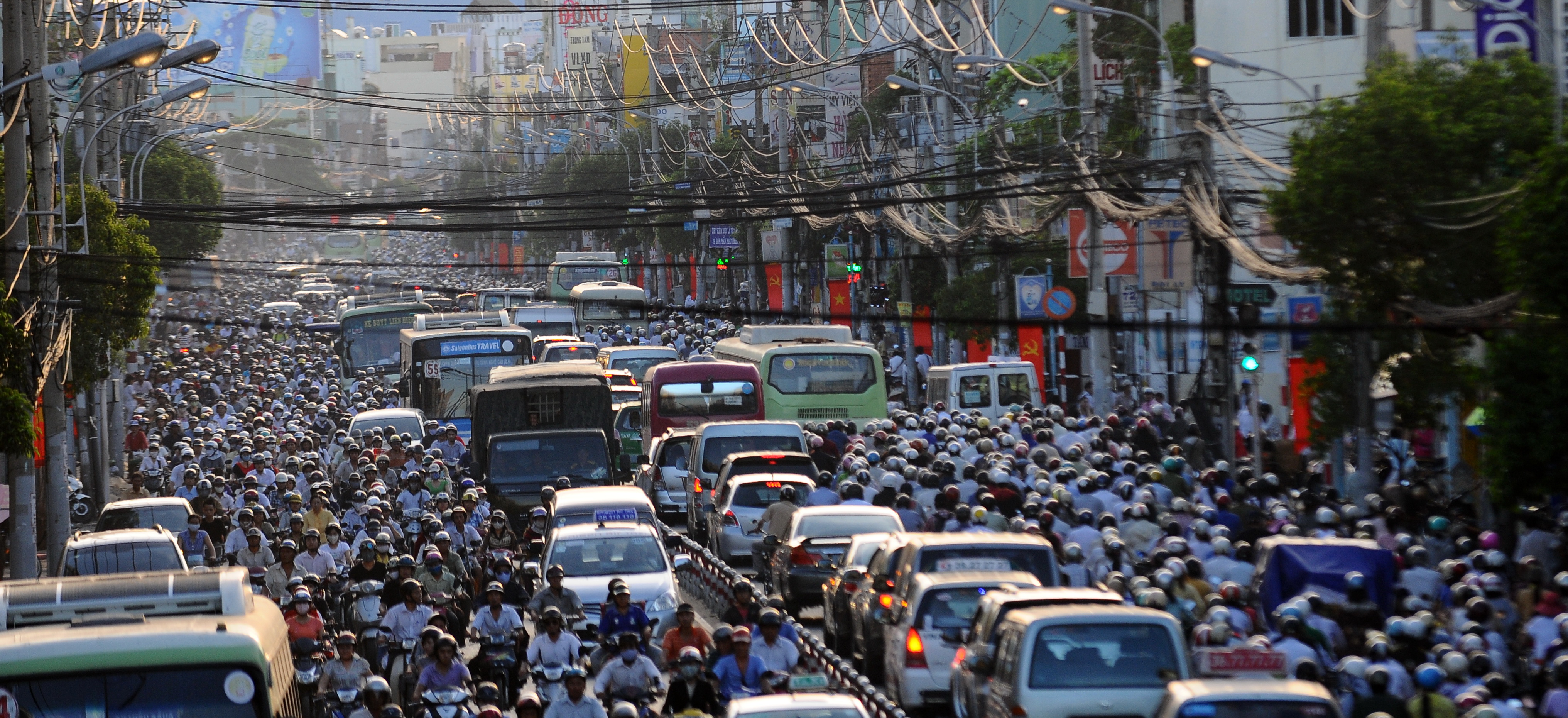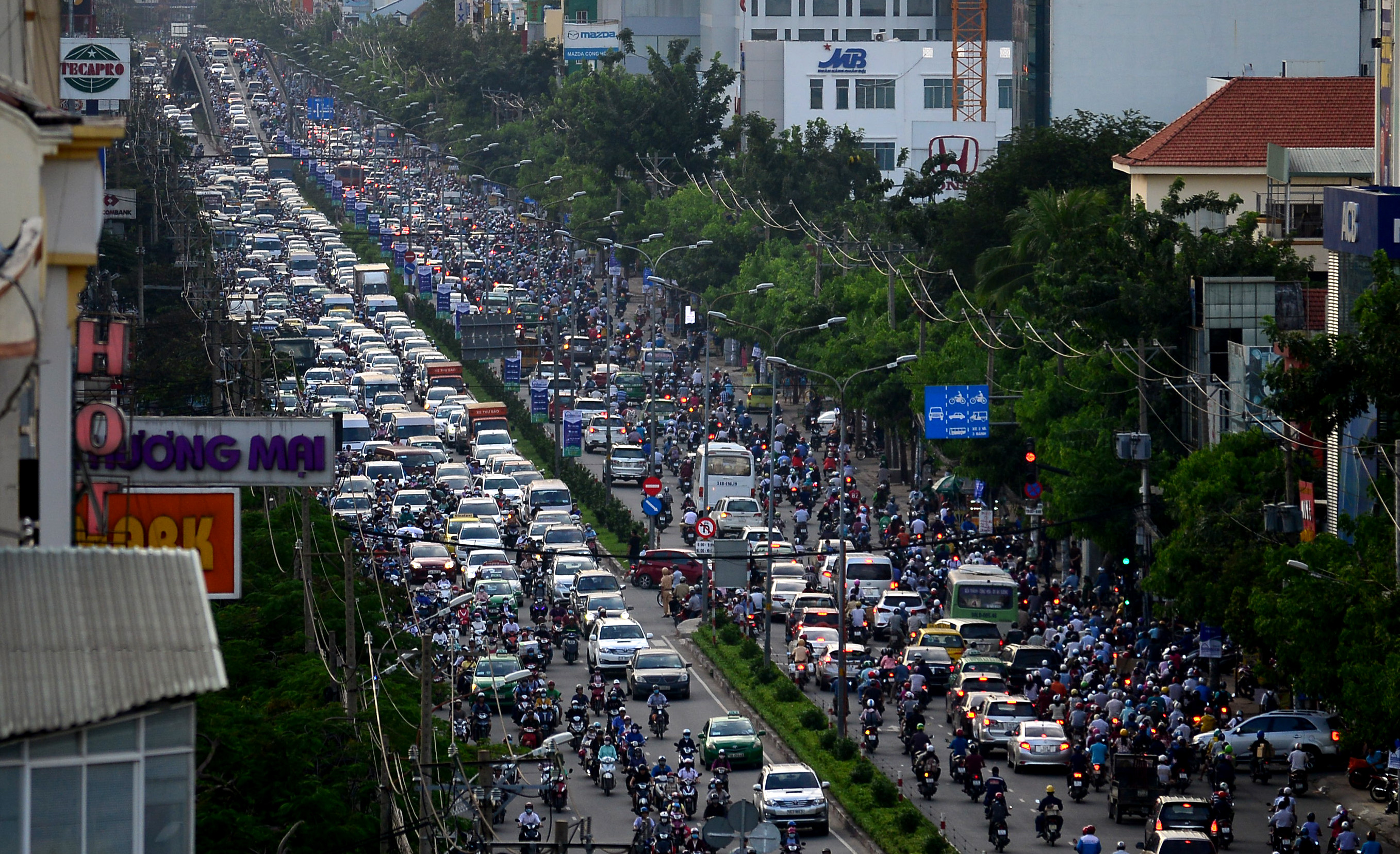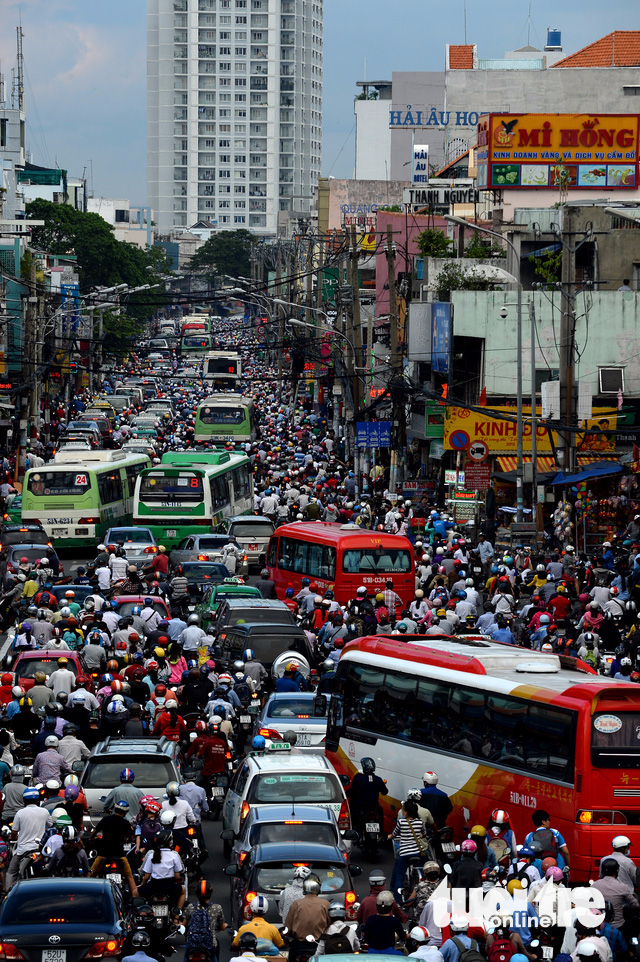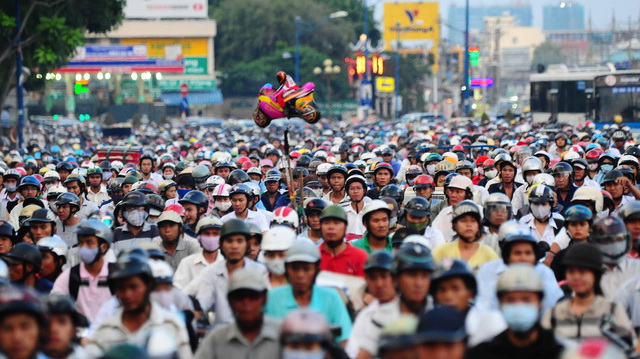As overpopulation remains a major issue in Ho Chi Minh City, the sluggish development of its transport infrastructure makes moving around a nightmare for city dwellers.
According to the Ho Chi Minh City Department of Transport, as of 2016 the city had only had 1.93 kilometers of road per square kilometer of land.
That number is around six times lower than what is required by Vietnam’s national construction standards, which is 10-13.3km/km2.
The southern metropolis currently spares just under 7,500ha, or 3.58 percent, of its total area for the development of transport infrastructure, while urban planners put the ideal number down to over 22,300ha.
Considering only construction land, this proportion still sits at 8.23 percent compared to the planned 22.3 percent.
Meanwhile, over 70 percent of roadways in Ho Chi Minh City measure under seven meters in width, posing a challenge for the development of public transport.
Buses and taxis currently meet only 9.3 percent of the city’s massive commuting needs, while key projects to develop the first bus rapid transit (BRT) and metro line have either been scrapped completely or slowed down due to capital allocation issues.
 |
| How can people move amid this traffic jam in Ho Chi Minh City? Photo: Tuoi Tre |
With such an underdeveloped transport system, the bustling city is constantly strained to its limit by a massive and increasing number of personal vehicles.
As of June 15, there were 7.4 million motorbikes and over 652,000 cars registered in the city, up 5.6 percent from 2016.
Most of the city’s lifeline roads suffer from different degrees of congestion during morning and afternoon rush hours, as the average speed of automobiles measured on these streets is only 22 kilometers per hour, according to statistics on the city’s traffic portal.
A plan announced last year by the municipal People’s Committee to increase the city’s proportion of transport land over construction land to 12.2 percent by 2020, with public transport meeting 15-20 percent of the commuting needs, is looking more and more far-fetched.
 |
| A severe traffic jam in Ho Chi Minh City. Photo: Tuoi Tre |
According to Bui Xuan Cuong, director of the municipal Department of Transport, one of the major hurdles between the city and that goal is the VND162 trillion (US$7.14 billion) needed to develop 32 pending key transport projects.
Meanwhile, a master plan of transport infrastructure until 2025 includes 203 projects with a total development capital of VND553.88 trillion ($24.4 billion), of which the city is currently only able to afford 31.8 percent, according to Tran Viet Thang, an urban planning expert from the Vietnam National University-Ho Chi Minh City.
These projects include elevated highways connecting its key areas, a belt road to help reroute traffic away from the city center, and a smart control center to monitor citywide traffic.
The People’s Committee of Ho Chi Minh City has sought the central government’s permission for more special mechanisms to speed up its development of transport infrastructure, including the ability to appoint contractors and impose heavier fines on those responsible for delays to land clearance and resettlement plans.
 |
| Heavy traffic congestion in Ho Chi Minh City. Photo: Tuoi Tre |
Like us on Facebook or follow us on Twitter to get the latest news about Vietnam!



















































